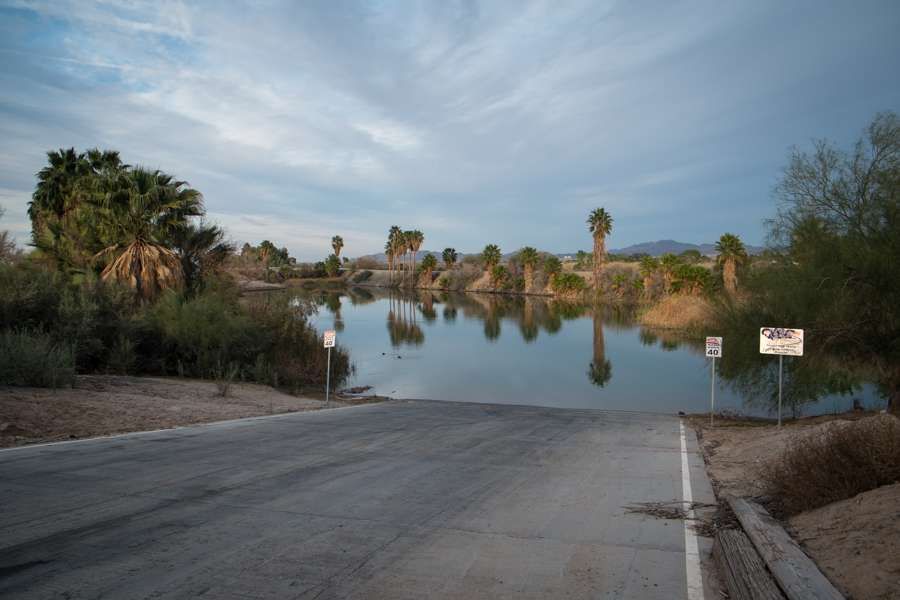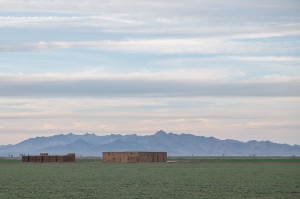BLYTHE, CALIF. – It’s not quite the way I remember it. I suppose it never is.
I’m on a reporting trip. I had some meetings in Phoenix today, then made a freeway dash out to the Colorado River for a few days of journalism-by-wandering-around. I ended up this evening near sundown in Blythe, Calif., dumped my stuff at the motel and headed out to the river to try to find a spot I remembered from my youth.
Blythe is on the California side of the river where Interstate 10 crosses, with a freeway fast food/motel strip and the sort of beleaguered economy you see in the desert ag towns of the Lower Colorado. Average per capita annual income here is $16,329, just 55 percent of the state average, according to the U.S. Census Bureau.
I have a few different stories about why my life is so entwined with the Colorado River. This is one of them.
The little marina, out by the freeway bridge, is not where I remember it being. When I was 14, in the summer of 1973, my friends and I from Boy Scout Troop 623 of Upland, Calif., spent a day learning to paddle our canoes there before setting off on the grand adventure, a week’s paddle from Blythe to Imperial Dam. I remember the marina being on the south side of the freeway, though I’m sure it’s always been on the north, but whatever. It is one of the happiest memories of my life, and I’m sure that part is accurate, even if I got the side of the freeway wrong.
It was hot as blazes – August in the desert of the Lower Colorado! – but we were paddling on the river, which is like a slow-moving lake here. No wild rapids. Jumping out of the canoe and into the water while floating idly was part of the deal, as was hopping out to drag the boats across bars. I’m sure I’m remembering that part right.
One of the things I didn’t remember was the alfalfa field to the north of the marina, which has a lot to do with why I’m back. The Palo Verde Irrigation District has some of the oldest water rights on the river, which are mostly used to grow alfalfa and cotton (some recent acreage numbers here). In 2014, PVID farmers consumed 424,561 acre feet of water (data here in pdf). Palo Verde is also home to one of the more interesting water management innovations on the river, a fallowing program with urban L.A. water users that leaves land out of production so water can be transferred for municipal use. When I was there today, you could smell freshly cut alfalfa as I drove east out of town in search of my memories.
I don’t remember the graffiti under the freeway bridge, either, though I’m sure there was some. Why would there not be?
I’ve realized of late that while I say I’m working on “a book about the Colorado River,” in fact I’m working on a book that’s primarily about what happens to the water once we remove it from the Colorado River. The river, as a human construct, extends in my mind to the things we’ve built on its back. So it’s interesting that my project’s origin myth, that teenage float down the river from Blythe to Imperial Dam, was about the river still in its channel. I’ll have to work this idea over some more, see where it fits.



Funny that you took a canoe trip on the Colorado River from Blythe to Imperial Dam in 1973. A group of my friends did the same in 1974. I was living in Yuma at the time and took them up there in my VW Bus. Dropped them off at the river bridge on a Friday morning and was going to pick them up in the Yuma region sometime on Sunday afternoon. That was the plan.
Sunday afternoon rolled around and no call. Sunday evening passed as well. I was getting worried. Then, at about 11:30 PM I get the call from the Dam operator at Imperial to ‘collect’ my friends.
I get there sometime after midnight and see what the river had done. All of them were sunburned beyond belief and recanted a tale of paddling through hell, one stroke at a time. It too, was a great story. retold many times before we parted our ways in life.
We all have our stories about the river.
dg
Pingback: "How's the book going?" - jfleck at inkstain